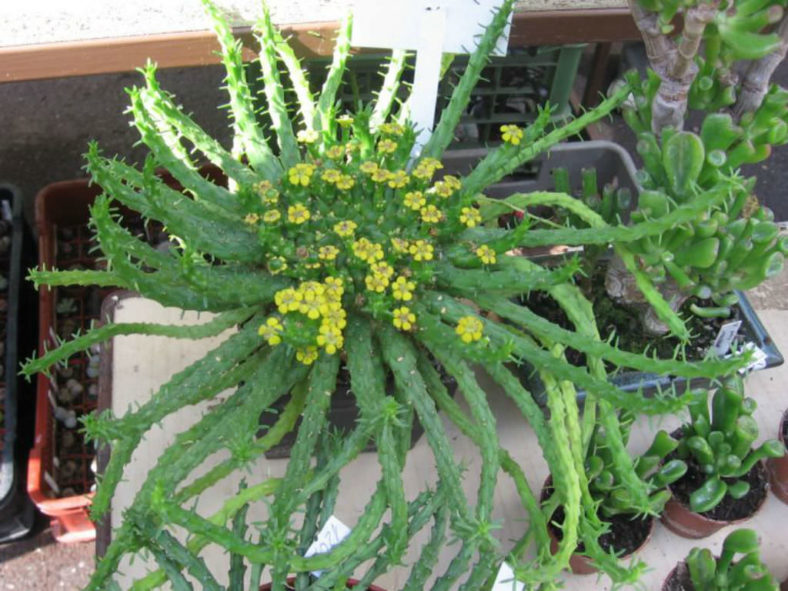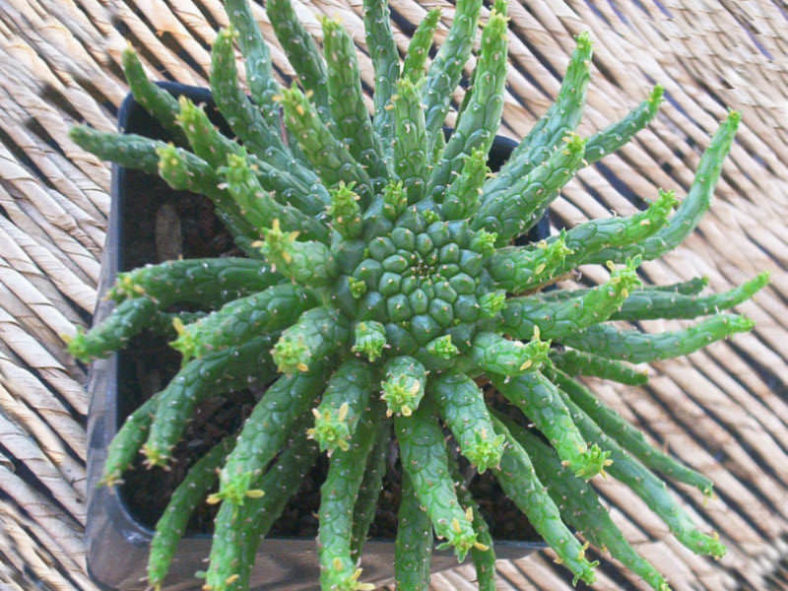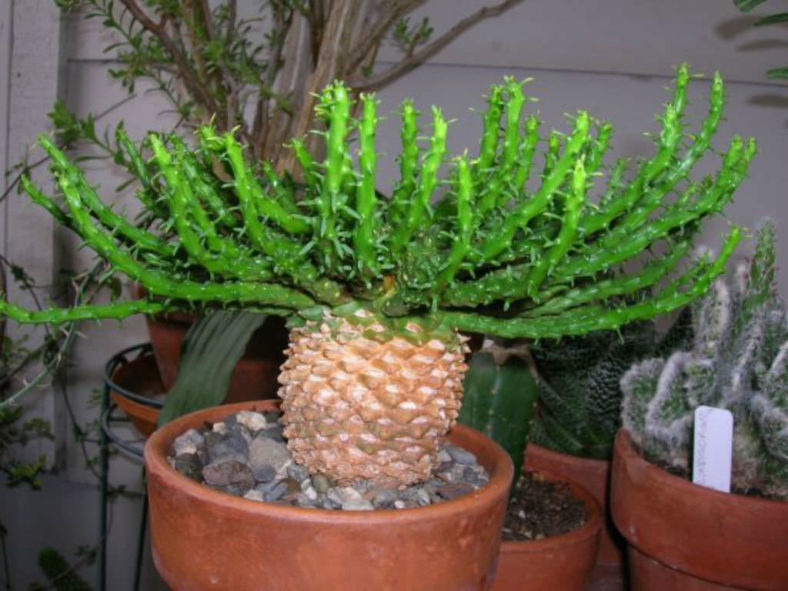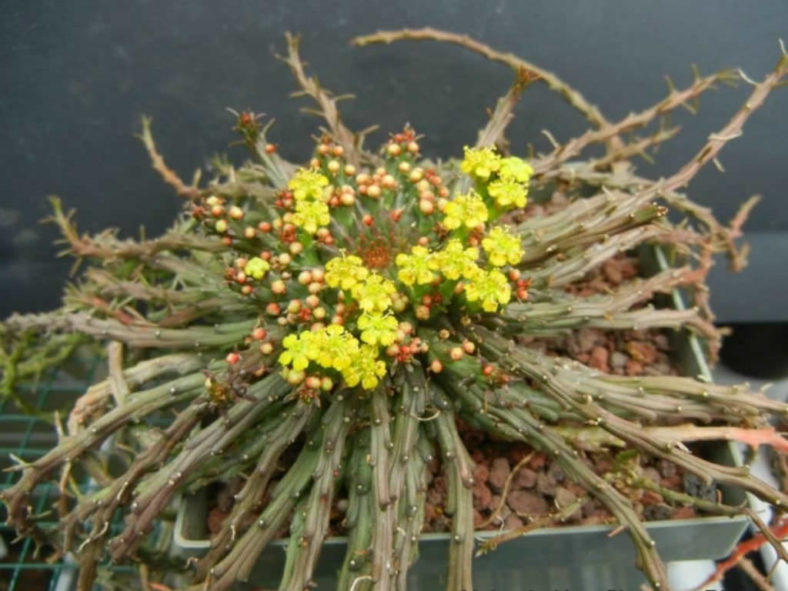Scientific Name
Euphorbia flanaganii N. E. Br.
Common Name(s)
Medusa's Head, Medusa Head
Synonym(s)
Euphorbia discreta, Euphorbia ernestii, Euphorbia franksiae, Euphorbia gatbergensis, Euphorbia passa, Euphorbia woodii
Scientific Classification
Family: Euphorbiaceae
Subfamily: Euphorbioideae
Tribe: Euphorbieae
Subtribe: Euphorbiinae
Genus: Euphorbia
Etymology
The specific epithet "flanaganii" (pronounced "flan-uh-GAN-ee-eye") honors Henry George Flanagan (1861-1919), a South African-born plant collector, traveller, botanist, and farmer.
Origin
Euphorbia flanaganii is native to South Africa (Cape Province).
Description
Euphorbia flanaganii is a small succulent with a swollen, underground stem and cylindrical, snake-like branches that grow flat on the ground. The branches can spread up to 16 inches (40 cm) in diameter. The leaves are linear to acute and can measure up to 0.4 inches (1 cm) long.
In summer, clusters of yellow cyathia appear, usually at the tip of the stem in the central part of the plant.

Forms of Euphorbia flanaganii (Medusa's Head)
How to Grow and Care for Euphorbia flanaganii (Medusa's Head)
Hardiness: USDA hardiness zones 9b to 11b: from 25°F (-3.9°C) to 50°F (10°C).
Unlike most succulents, Medusa's Head does not tolerate prolonged drought well. During the summer, it may need weekly watering. Water whenever the top several inches of the soil are dry. It warns of a lack of water by gradually curling up its arms toward the center. Water thoroughly, but avoid allowing it to sit in wet soil, as this can cause root rot.
It thrives in direct sunlight and requires at least 6 hours of direct sunlight per day for optimal health and growth. On a brighter note, Medusa's Head makes an exceptional container plant, and it can also be grown in gardens, provided it is protected from freezing temperatures.
Once it reaches a certain size, a mother plant will produce pups on the ends of older arms. The growth starts as a swelling at the end of an arm, and the caudex and arms rapidly grow. After a time, if they don't root on their own, the arm shrivels, allowing the pup to roll away, where it rapidly grows if given access to soil and water. If you're not careful, you can end up with a greenhouse full of them.
Learn more at How to Grow and Care for Euphorbia.
Links
- Back to genus Euphorbia
- Succupedia: Browse succulents by Scientific Name, Common Name, Genus, Family, USDA Hardiness Zone, Origin, or cacti by Genus
Photo Gallery
Click on a photo to see a larger version.


